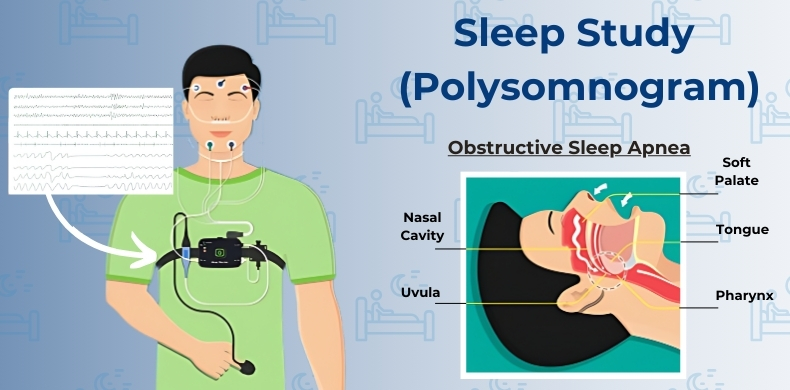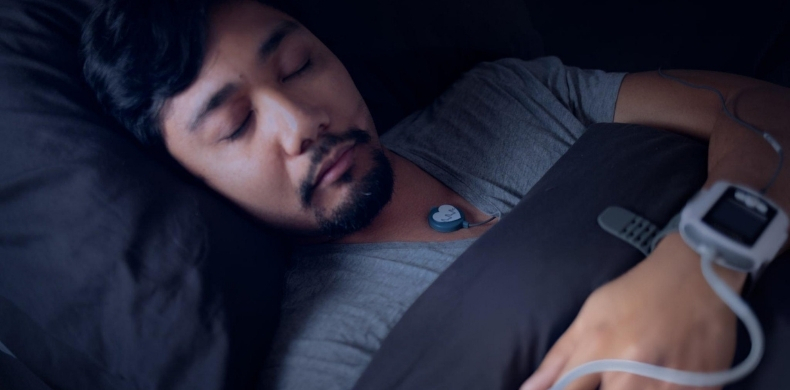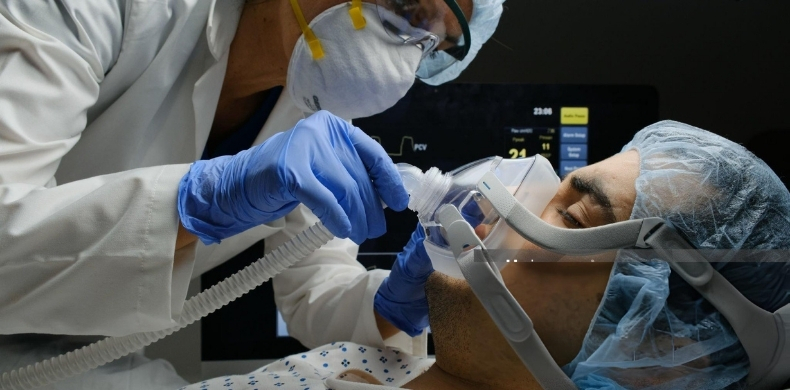Nowadays, due to busy schedules, every person is facing so much tiredness and stress. All these aspects can impact our daily sleep, and unfortunately, sleep diseases like sleep apnea are the main reason behind the lack of sleep. But how can a normal person recognize that they have any sleep related disorders? So there are some options to diagnose it, whether you can consult with expert pulmonologist or you can do home sleep test. For busy kind of people, home sleep test is an appropriate option. So if you are wondering what home sleep studies are or how to perform a home sleep test, then this blog can provide you complete information on home sleep test measures.

What Are Home Sleep Studies?
Home sleep studies, also known as at-home sleep tests, are medical tests that help a person to monitor their sleep patterns and identify potential sleep diseases from the comfort of their own homes. These tests are designed to diagnose conditions such as obstructive sleep apnea, a disorder characterized by pauses in breathing during sleep.
Benefits of Home Sleep Studies
- Convenience: Unlike traditional sleep studies that require an overnight stay in a sleep lab, home sleep tests can be conducted in your own bed, making them more comfortable and less intrusive.
- Cost-Effective: Home sleep studies are generally more affordable than lab-based tests, making them accessible to a broader range of patients.
- Accessibility: These tests are ideal for individuals who live in remote areas or have mobility issues that make it difficult to travel to a sleep lab.
How Do Home Sleep Studies Work?
Home sleep studies use portable devices that record various physiological parameters while you sleep. These devices are easy to use and come with clear instructions for setup.
Components of a Home Sleep Test
- Respiratory Effort Sensors: These sensors are placed on the chest to measure the effort your body makes to breathe.
- Nasal Cannula or Thermistor: Placed in the nostrils, these devices measure airflow and detect any interruptions in breathing.
- Pulse Oximeter: Worn on the finger, this device measures blood oxygen levels, which can drop during apnea events.
- Position Sensor: Attached to the chest or back, this sensor tracks your sleeping position, as certain positions can exacerbate sleep apnea.
Steps to Conduct a Home Sleep Test
- Preparation: Follow your healthcare provider’s instructions for setting up the device. Ensure you have a comfortable sleeping environment.
- Setup: Attach the sensors as instructed, making sure they are secure but not uncomfortable.
- Sleep: Go to bed at your usual time and try to sleep as normally as possible. The device will record data throughout the night.
- Return the Device: After the test, return the device to your healthcare provider or sleep specialist for analysis.
What Does a Home Sleep Test Measure?
A home sleep test measures several key parameters that help diagnose sleep disorders, particularly obstructive sleep apnea.
ey Measurements
- Apnea-Hypopnea Index (AHI): This index indicates the number of apnea (complete cessation of breathing) and hypopnea (partial blockage of the airway) events per hour of sleep. A higher AHI suggests more severe sleep apnea.
- Oxygen Desaturation Index (ODI): This measures the number of times per hour that blood oxygen levels drop by a certain percentage. Frequent drops in oxygen levels can indicate sleep apnea.
- Heart Rate: Variations in heart rate during sleep can signal disruptions in breathing patterns.
- Sleep Position: The position you sleep in can affect the severity of sleep apnea. The test records your position to see if certain positions correlate with apnea events.
Who Should Consider a Home Sleep Study(Polysomnography)?
Home sleep studies are suitable for individuals who suspect they have sleep apnea but do not have other significant health conditions that require a more comprehensive evaluation in a sleep lab.
Ideal Candidates
- Adults with Symptoms of Sleep Apnea: If you snore loudly, experience daytime fatigue, or have been told you stop breathing during sleep, a home sleep test might be right for you.
- Individuals with Mild to Moderate Symptoms: For those with severe symptoms or other health issues, an in-lab sleep study (Polysomnography) may still be necessary.
- People Seeking Convenience: If you prefer the comfort and privacy of your own home, a home sleep study offers a practical alternative to an in-lab test.
Interpreting the Results
Once you have completed your home sleep test, the data will be analyzed by a sleep specialist. They will review the recordings to determine if you have sleep apnea and, if so, the severity of the condition.
Possible Outcomes
- No Sleep Apnea: If the test shows no significant disruptions in breathing, you may not have sleep apnea.
- Mild Sleep Apnea: Characterized by an AHI of 5-15, indicating occasional breathing interruptions.
- Moderate Sleep Apnea: An AHI of 15-30 suggests more frequent disruptions.
- Severe Sleep Apnea: An AHI above 30 indicates frequent and severe breathing interruptions.
Next Steps After a Home Sleep Study(Polysomnography)
Based on the results, your healthcare provider will recommend appropriate treatment options.
Treatment Options
- Lifestyle Changes: For mild cases, weight loss, avoiding alcohol before bed, and sleeping on your side can help reduce symptoms.
- Continuous Positive Airway Pressure (CPAP): This device delivers a steady stream of air to keep your airway open during sleep.
- Oral Appliances: These devices, worn in the mouth, help keep the airway open by repositioning the jaw.
Conclusion
Home sleep studies are a convenient source, that is cost-effective, and accessible way to diagnose sleep disorders like obstructive sleep apnea. By understanding how these tests work and what they measure, you can take proactive steps to improve your sleep health. If you suspect you have sleep apnea, talk to Prof. Dr. Syed Arshad Husain, the best pulmonologist in Dubai. Because with the right diagnosis and treatment, you can enjoy better sleep and a healthier life.
FAQ’s:
Q. What happens after I complete a home sleep study?
After completing a home sleep study, the data is analyzed by a sleep specialist to diagnose any sleep disorders and recommend appropriate treatments.
Q. Who is a candidate for a home sleep study?
Candidates for a home sleep study include those with suspected sleep apnea or other sleep disorders, especially when an in-lab study isn’t possible.
Q. What equipment is used in a home sleep study?
Home sleep studies use equipment like a nasal cannula, chest and abdominal belts, and pulse oximeter to monitor breathing, oxygen levels, and sleep patterns.
Q. Are there any risks or side effects associated with home sleep studies?
Home sleep studies are generally safe with minimal risks or side effects. Some people might experience minor discomfort from the equipment.
Q. How accurate are home sleep studies compared to lab sleep studies?
Home sleep studies are accurate for diagnosing certain sleep disorders like sleep apnea, but may not be as comprehensive as lab sleep studies for other conditions.



